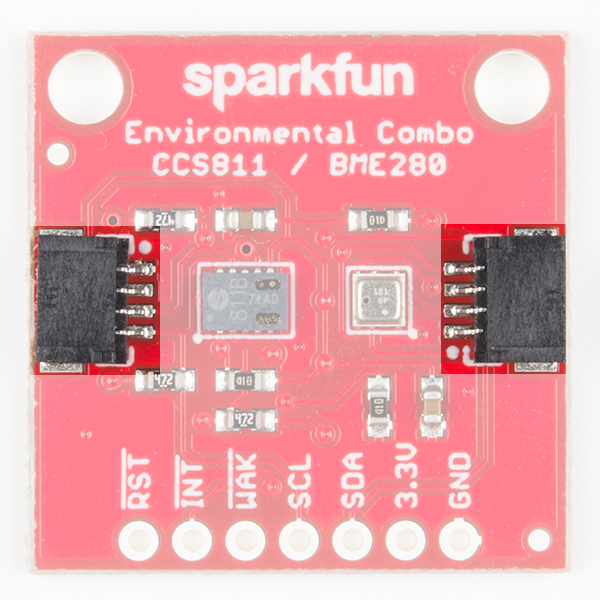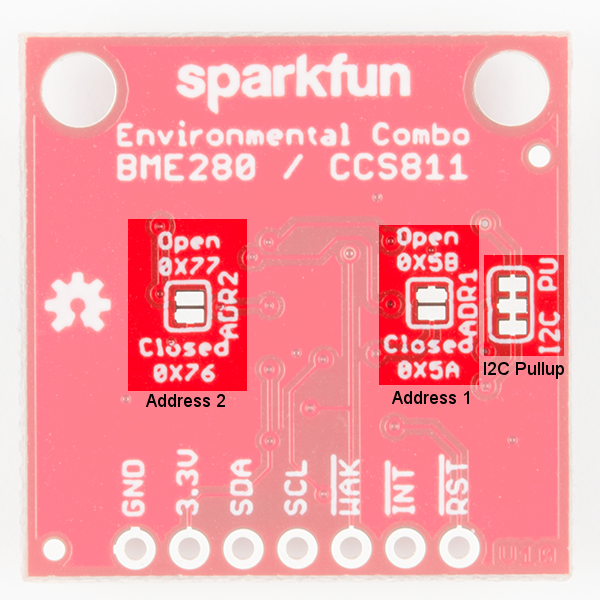CCS811/BME280 (Qwiic) Environmental Combo Breakout Hookup Guide
Hardware Overview
Power & Features
Together the sensors can consume 13 mA of current. It takes 12 mA to power the CCS811 while 1 mA to power the BME280.
| Characteristic | Range |
|---|---|
| Operating Voltage | 3.3V: Regulated to 1.8V - 3.6V |
| tVOC | 0 - 1187 PPB |
| eCO2 | 400 - 8192 PPM |
| Temperature | -40°C - 85°C |
| Humidity | 0 - 100% RH, ±3% from 20 - 80% |
| Pressure | 30 - 110 kPa, relative accuracy of 12 Pa, absolute accuracy of 100 Pa |
| Altitude | 0 - 30,000ft (9.2km), relative accuracy of 3.3ft (1M) at sea level, 6.6ft (2M) at 30,000ft. |
Communication via I2C
The CCS811+BME280 communicates exclusively via I2C, utilizing our handy Qwiic system. The Qwiic System utilizes the 4-pin polarized Qwiic connectors highlighted below.
The I2C address can also be changed using the jumpers on the back of the board if you are using another device with the same I2C address. ADR1 can be used to change the I2C address of the CCS811 from 0x5B to 0x5A by adding solder to close the jumper. The ADR2 jumper can be used to change the I2C address of the BME280 from 0x77 to 0x76. The I2C bus has pull-up resistors enabled by default. If not desired, these can be removed by separating the "I2C PU" triple jumper on the bottom side with a hobby knife. The locations of these jumpers are shown in the picture below.
Pins
Below is a list of pins made available for the CCS811 and BME280 environmental combo breakout.
| Pin | Description | Direction |
|---|---|---|
| RST | Reset (active low, CCS811) | In |
| INT | Interrupt (active low, CCS811) | Out |
| WAK | Wake (active low, CCS811) | In |
| SCL | Clock | In |
| SDA | Data | In |
| 3.3V | Power | In |
| GND | Ground | In |
Optional Control Lines for the CCS811
Additionally, the three control lines RST, INT, and WAK can be used to further the degree of control over the CCS811.
- RST --- Pull this line low to reset the IC.
- INT --- After configuring the sensor to emit interrupt requests, read this line to determine the state of the interrupt.
- WAK --- Pull this line high to put the sensor to sleep. This can be used to save power but is not necessary if power is not an issue.

